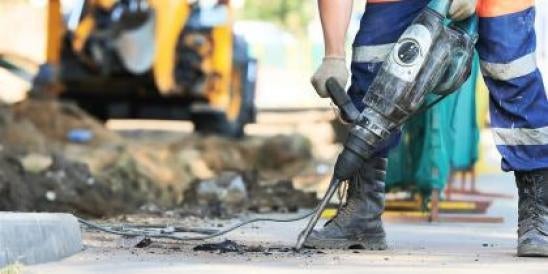Construction industry employers face new requirements following the May 4th release of the Occupational Safety and Health Administration’s comprehensive final rule governing confined spaces in construction. The rule goes into effect August 3, 2015.
The new standard, Subpart AA of 29 CFR 1926 requires employers to determine what kinds of confined spaces their workers are in, what hazards could be there, how those hazards should be made safe, what training workers should receive, and how to rescue those workers if anything goes wrong.
"This rule will save lives of construction workers," said OSHA Assistant Secretary Dr. David Michaels. He added that the emphasis in the rule is on training, continuous worksite evaluation, and communication. The agency estimates that the rule would result each year in five fewer construction workers' deaths and 780 fewer workers being injured due to confined spaces hazards.
The rule defines confined spaces as work areas that:
(1) are large enough for an employee to enter,
(2) have limited means of entry or exit, and
(3) are not designed for continuous occupancy.
Such spaces can present physical and atmospheric hazards, the agency said. The rule requires preparation of a written program before entry is allowed into any location meeting the legal definition of a “permit space” (i.e., a permit-required confined space).
Among the standard's key requirements is one providing that every employer with employees working on a job site containing a permit space, but whose work will not require their workers to enter it, still must take affirmative steps to prevent entry by their employees. In addition, the controlling contractor, rather than the host employer, is the primary point of contact for information about permit spaces at the worksite. At sites where both OSHA’s general industry and its construction industry confined spaces regulations apply, employers must adhere to the construction industry regulations.
OSHA identified a number of areas within which confined spaces could occur, including:
bins; boilers; pits; manholes; tanks; incinerators; scrubbers; concrete pier columns; sewers; transformer vaults; heating, ventilating, and air-conditioning (HVAC) ducts; storm drains; water mains; precast concrete and other pre-formed manhole units; drilled shafts; enclosed beams; vessels; digesters; lift stations; cesspools; silos; air receivers; sludge gates; air preheaters; step up transformers; turbines; chillers; bag houses; and mixers/reactors.
According to the agency, the rule will affect construction work involving buildings, highways, bridges, tunnels, utility lines, and more, as well as general contractors, specialty-trade construction contractors, and employers engaged in some types of residential construction work.
The standard does not apply to construction work regulated by:
§1926 subpart P, on excavations;
§1926 subpart S, on underground construction, caissons, cofferdams, and compressed air; or
§1926 subpart Y, on diving.
The new regulation is similar to permit-required confined spaces requirements that have been in place in general industry since 1993. However, a number of changes have been made to tailor the rule to the unique construction environment. These include requirements to ensure that multiple employers share vital safety information and continuously monitor hazards. Some provisions in the new rule clarify existing requirements in the general industry standard, OSHA said.
The regulation updates a training-only requirement for confined spaces in construction that dates to 1979. After the 1993 general industry confined spaces standard went into effect, OSHA agreed to propose a standard for confined spaces in construction as part of a legal settlement with the United Steelworkers of America. The proposed rule was issued in November 2007.





 i
i


